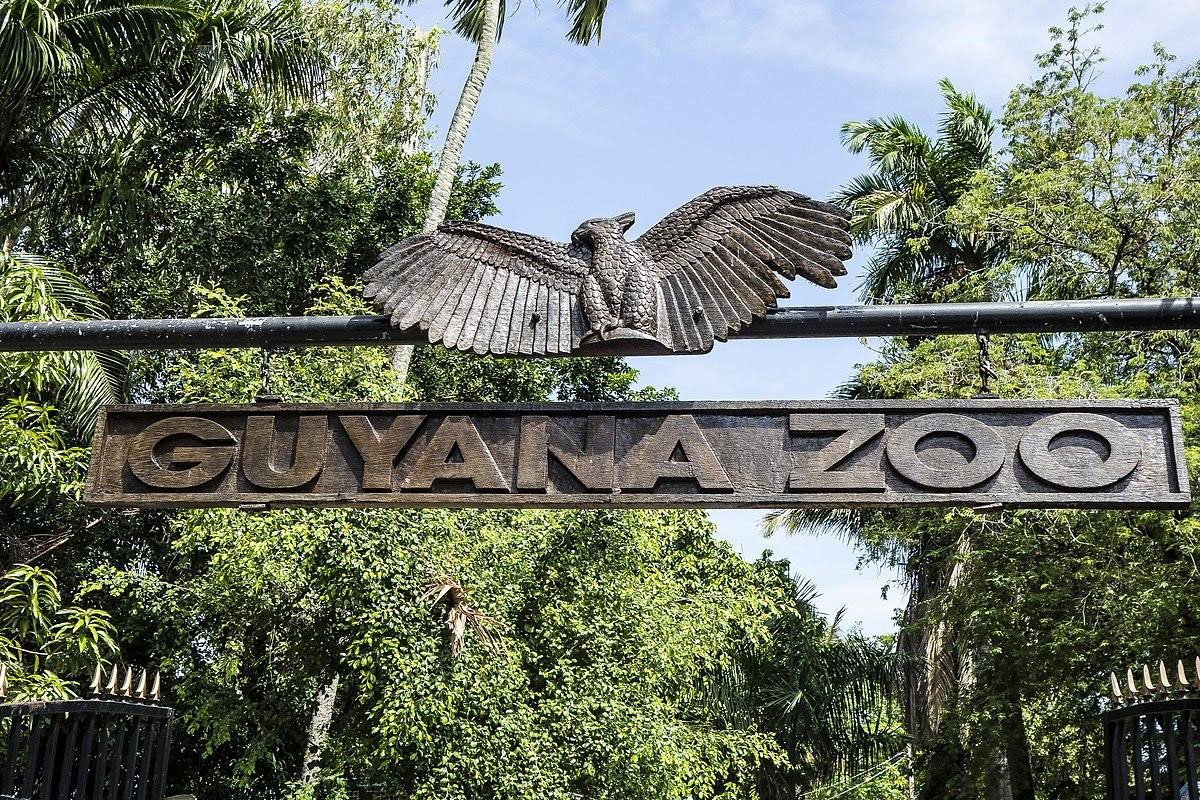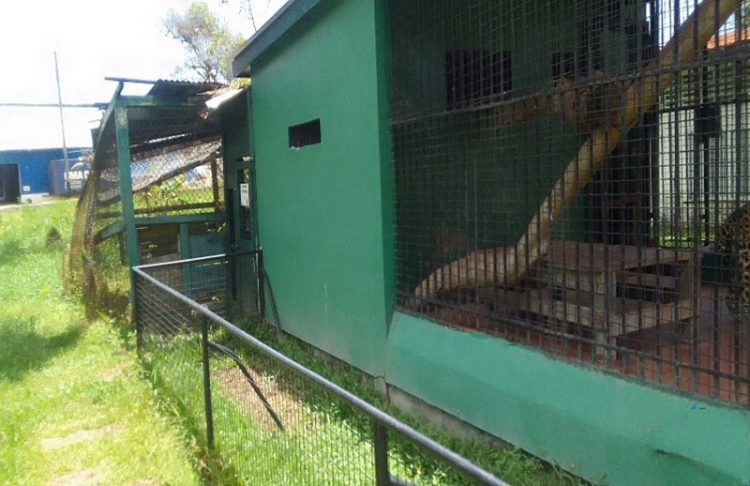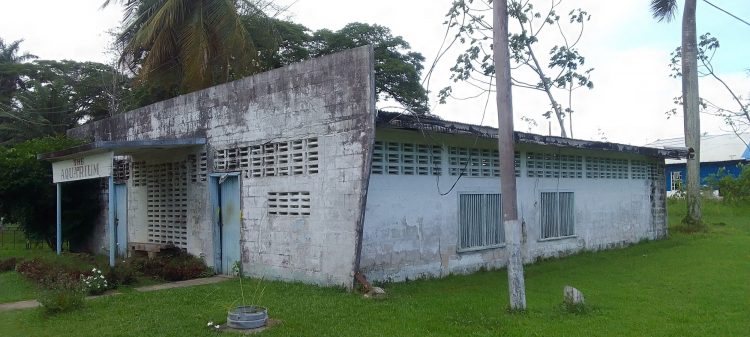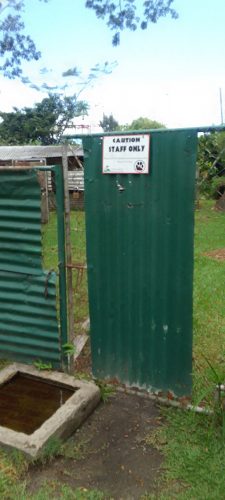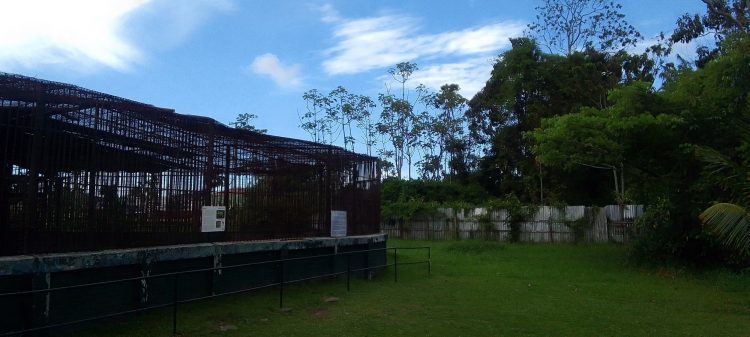Many children dream of going to the zoo. Seeing a colourful assortment of birds, mammals and reptiles perched atop their stands or lounging in the depths of their cages. When asked to conjure imagery of a zoo they would seldom think of empty cages, small enclosures and deteriorating buildings. However, this was the unfortunate state of Guyana’s very own national zoo during a visit by this newspaper last week.
Attempts to elicit a comment from a supervisor at the zoo about its state was met with the response that she was not authorised to speak. She referred this newspaper to the Head of the National Parks Commission (NPC). Efforts at the NPC did not bear fruit.
Perhaps coincidentally, after this newspaper’s visit to the zoo, two notices appeared in the media for rehabilitation works in the zoo. One related to the renovation of the animal clinic and the other to the rehabilitation and extension of the jaguar enclosure.
A section of the zoo
According to a source connected to the zoo these are a few of the key issues facing the establishment. The zoo turned rescue centre is said to suffer from funding issues that make it hard to maintain a certain level of upkeep. Consequently the zoo has not undergone comprehensive maintenance in quite some time. This effect has trickled down to the animals, and it is evident in everything from the moss-covered pond, and small enclosures for the ‘big cats’, to a deer that died recently and a notable lack of zoo personnel.
The magnificent jaguar in the small cage.
After paying the $200 admissions fee, you are directed to the gates of the zoo and instructed to walk along the concrete path. This is the extent of the guidance you will receive throughout the duration of your visit. Upon entering and walking for a while it becomes evident that the zoo lacks both a substantial amount of animals and visitors, the latter of which was attributed to it being a weekday. The manatee pond which is one of the main attractions of the zoo was completely covered in moss which was so thick it forced the manatees to travel down the pond. Moving forward into the area containing the jaguar and puma, two of the largest cats on earth, they were kept in cages and enclosures barely big enough to house them securely. As you near the end of the zoo, there are no warnings to say this is the end or that you should turn back. The only sign to the completion of your self-tour is a dilapidated, condemned jaguar enclosure, which looks as though it could collapse at any moment.
The condemned aquarium.
Conversations with persons attached to the zoo revealed dissatisfaction with the funding of the organization. The national zoo, an important cultural landmark, has regressed significantly. The aquarium, the nature school and the petting zoo are what many schools go to see, but two of those attractions have been closed down and all that remains of them are structures that look out of place in the zoo.
“Staff only area”
Something that would certainly catch the attention of any one visiting is an entire exhibit of monkeys that seems to be closed. When an inquiry was made, it was revealed that a deer had died, said to be from old age. But it does not explain why an entire part of the zoo is closed because a deer died some days ago. It then begs the question, is the zoo so underfunded that with the death of a deer, its exhibit must close down permanently? Or can’t the zoo afford staff? Or more importantly, can the zoo afford to keep the few animals they do still have?
The end of the zoo.
